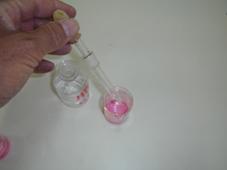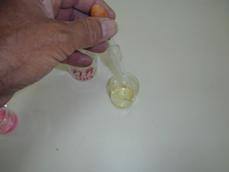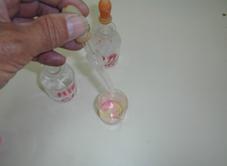
In the beaker is NH3(aq) (basic environment) with some drops of the indicator methyl red,
of which the abbreviated formula is: HIn
Than in the solution the following equilibrium will occur:
HIn
Red Yellow
The presence of a base (that absorbs H+) means a dislocation of the equilibrium to the right.

Now you add a bit of HCl(aq), the basic environment changes to a less basic or more aced env.
The acid wil donate H+, so:
the equilibrium: HIn
Red Yellow
dislocates to left and the red color will dominate.

Now again we add some base: Nu gaan we weer base toevoegen: (NH3(aq)), the color changes again to yellow
so the same equilibrium dislocated again to the right:
HIn
Red Yellow

Doing this can be repeated endless.
Every time the equilibrium will dislocate to the right of to the left.
The overall situation in the beaker does only change a very littlebit.
There is only a small dislocation of the equilibrium to one of the other side, dependent on the environment.